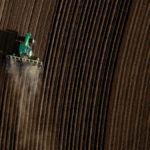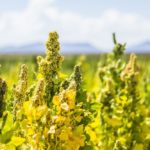
Tag Archives Soil

Plant signals trigger remarkable bacterial transformation
Nostoc bacteria convert atmospheric nitrogen to ammonia for the Sago palm

Comment: Can we bring back our soil?
The Soil Conservation Council of Canada is calling for a united effort from the farming community, government and agriculture industry to make soil health a priority

The vertical-tillage question defies pat answers
The controversial practice can serve a purpose, but won’t solve soil compaction

Study says excess phosphorus may reduce crop yields
Results suggest that excess levels can affect soil microbes

Managing microbes
Taking a page from pulse production, beneficial soil microbes are under the microscope

The importance of sticking to your crop’s water budget
Keep this crucial concept in mind when choosing crops to grow

Opinions differ on quinoa prices in 2019

‘Nutrition farming’ techniques key to Elie farm operation
Alex Boersch sees potential in the soil-building approach to make farming more profitable, sustainable and even more fun

Soil carbon goes with the flow
Lateral movement of carbon throughout landscapes is much more significant than thought



